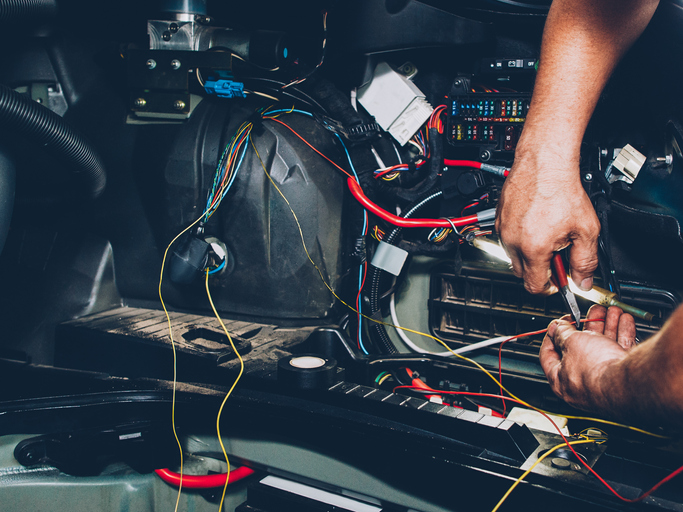Effectively Maintaining Vehicle Electrical Systems After Auto Technology Training
A vehicle’s electrical system is an essential component that ensures the vehicle runs smoothly without any difficulty. As an auto mechanic, you’ll need to provide your customers with preventive maintenance services that ensure their cars’ electrical systems work properly and won’t cause any damage down the line. Therefore, understanding the main components of the electrical system in a vehicle and how to maintain it is very important.
At ATC Toronto, you’ll get hands-on training and knowledge in servicing different types of vehicles and models. You’ll learn about a vehicle’s preventive maintenance, the electrical fundamentals of a vehicle and how to perform general electrical systems diagnostics. This will prepare you to offer an informed service to customers and effectively maintain their vehicles’ electrical systems. Find out more about the electrical system and its maintenance!
Know the 3 Components of an Electrical System After Auto Technology Training
A vehicle’s electrical system may seem complicated on paper, but it’s essentially made up of three components which work together and are responsible for supplying power to all parts of a vehicle. The electrical system works to power the locks, windows, headlights, interior lights, radio, defroster and more. Through your training, you’ll get to understand the fundamentals of a vehicle’s electrical system and its three components during your hands-on auto technology training.
The electrical system’s three components are the battery, the starter and the alternator. The battery acts as an energy storage device, holding the electrical current that powers each of a vehicle’s parts. For that to happen, a vehicle’s alternator kicks into effect and works to charge the battery and produce the electricity that the components need. Finally, there’s the starter, which uses power from the battery to jump-start the vehicle’s engine.

Good Maintenance Starts With a Clean Electrical System
Those working in auto careers may come across customers who seem to have electrical issues with their vehicles. The most common causes of a vehicle’s electrical system malfunctioning are dirt and corrosion. In that case, it’ll be up to you to assess the condition of the electrical system by carefully inspecting the cleanliness of the battery and its cables. You should advise your customers to have their batteries and cables checked once a month to avoid any corrosion caused by a build-up of dirt and dust. When cleaning the battery cables and battery posts, you can use a corrosion removal chemical or a mixture of water and baking soda to brush it off. Once you’re done, you’ll also have to ensure that the cables are tightly secured in the right place or there will be a loss of electrical current.
Check the Drive Belt of the Vehicle
When you finish cleaning the battery and battery cables, it’s also important to check on the drive belt, also known as the serpentine belt. The vehicle’s engine powers the drive belt to spin and deliver power to the electrical system, the cooling system and the A/C system of the vehicle. It also works to drive the mechanical components of the engine. To maintain its function, you’ll need to check for any sort of cracks, dryness or glazing on the surface of the drive belt.

If there’s any sign of these defects, they’ll prevent the alternator from generating power for the electric system of the vehicle or even recharging the battery. The drive belt will have to be replaced, and based on the manufacturer’s recommendations, you’ll have to determine the proper tension for the drive belt.
Are you interested in auto repair programs?
Contact ATC Toronto for more information!


